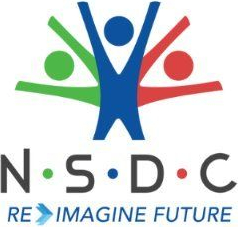How AI is Rewriting the Rules of Online Visibility

There is now a growing consensus that businesses must modify their technological and content strategies to conform to the way AI interprets data as the transition from SEO to Gen-AI powered optimization firmly takes hold. Changing strategy to make sure useful content is readable and desirable by both conventional search engines and its AI-powered successors is more important than ever.
The golden rule of digital exposure for years was pretty straightforward: become an expert in Search Engine Optimization (SEO), move up the search engine ranks and increase traffic through clicks. To get our websites seen, we threw a lot of effort into optimizing meta tags, creating link profiles, and concentrating on Google’s E-E-A-T (Experience, Expertise, Authoritativeness and Trustworthiness) protocol. And it worked for a while. Securing excellent real estate on a busy roadway was similar to reaching the top of the results page; businesses would prosper and clicks would pour in.
A Paradigm Shift
However, the internet, much like a winding riverbed, is ever-changing. Generative AI is the new force changing the way people find information. All of a sudden, search results are more than simply lists of links. AI-powered search engines, such as Microsoft’s Bing Chat, Google’s Search Generative Experience (SGE) and Perplexity.ai, are increasingly giving customers direct, AI-generated responses by combining data from multiple sources into conversational summaries.
This is more than just a feature update; it’s a paradigm shift. A user may never go through to your website if they receive an AI response to their query. This has a fundamental impact on traffic flow. Generative Engine Optimization (GEO), the new field of optimizing for generative AI engines, is replacing the days of just optimizing for SEO. The objective is now to make sure your material is considered relevant and reputable enough to be cited or included in the AI’s response, rather than just getting a click.
What is required to navigate this new terrain, then? It is necessary to comprehend the values of these generative AI models. It’s more about the content’s substance, structure, and believability than it is about keyword density (in fact keyword stuffing hasn’t functioned too well in several recent studies). Consider AI as a very quick, albeit occasionally unreliable, student attempting to summarize the web. It requires well-structured, lucid notes from reliable sources. To excel at GEO, research indicates the following aspects need to be considered primarily:
First, the quality and depth of the content are crucial. Priority is given to thoroughly researched content that covers several aspects of a subject. Semantic SEO (related terms, user intent) and natural, conversational language enable AI to comprehend context similarly to how humans do. Additionally, AI can assist customize content by analyzing user data.
Second, technical underpinnings and structure are important. AI can better interpret your text and comprehend the connections between different bits of information if you use structured data markup (such as Schema), bullet points, and unambiguous headings. It’s like giving the AI a library with excellent indexing. Crawlability and comprehension are also enhanced by site speed and well-written code.
Thirdly and perhaps most crucially, in order to be chosen as a source, credibility signals are essential. Important considerations are emphasized, such as citing reliable sources, including author biographies with qualifications, and maintaining content freshness. Despite being trained on enormous datasets, AI models may still provide biased or “hallucinate” results. Reliable AI responses are more likely to contain content that exhibits authority and credibility. Citations, quotes and statistics have been shown to significantly increase source visibility in AI-generated responses.
— Human skills and judgement is still unequivocally crucial, even while AI provides strong tools for automating jobs like content creation, keyword research, optimization, and even A/B testing. Humans are still the greatest at strategy, creativity, and cross-checking AI-generated content. AI is not a complete substitute; it is a force multiplier.


